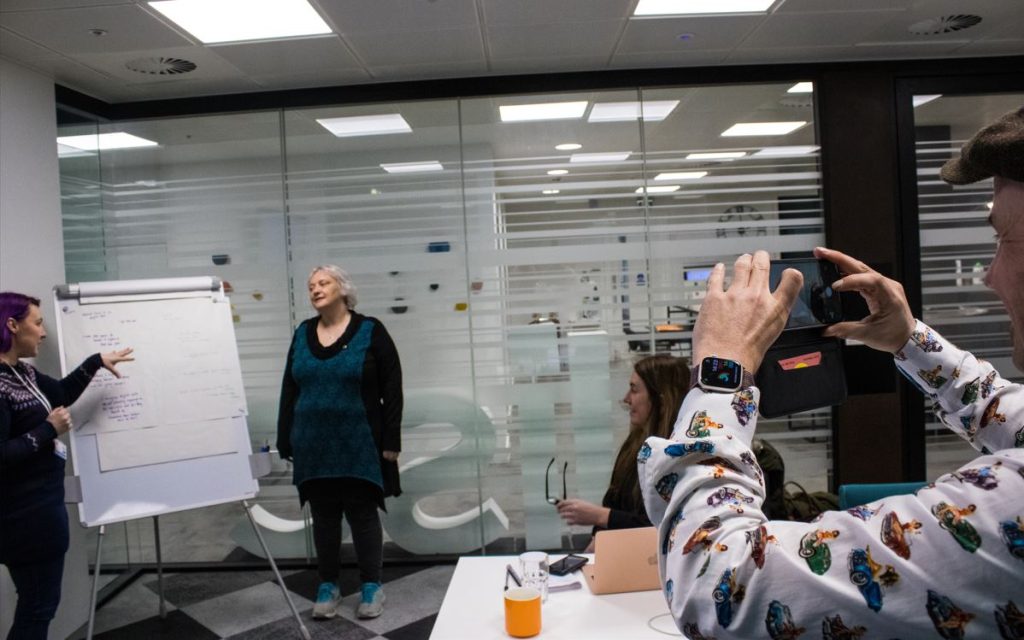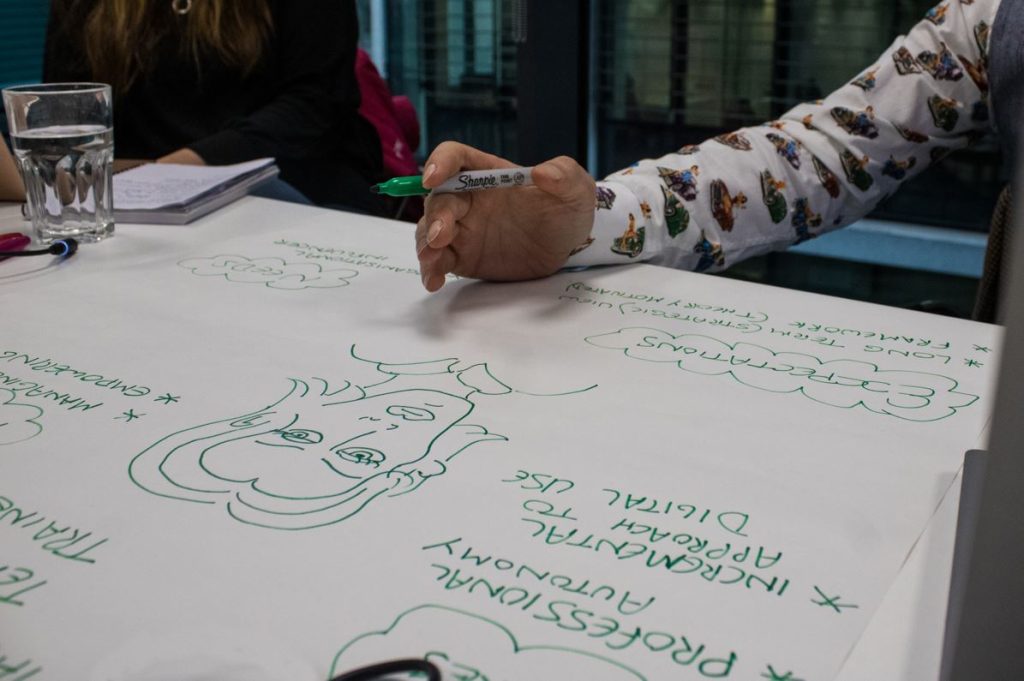How can we support teachers working in initial teacher education (ITE) to develop their digital practice?
We finished the discovery phase of the project addressing the above question in February, which involved a series of twelve in-depth interviews. The Jisc project team then met at our London offices in late February to analyse the data and prototype potential solutions.

Based on the twelve in-depth interviews, we’re pleased to share the ITE project report that provides a snapshot of current digital practice across ITE. The findings in this report investigate the organisational support teachers can draw on as well as stories of individual good practice.
What did the interview data tell us?
The interviews carried out with members responsible for ITE involved structured questions to identify digital trends, highlight challenges and surface good practice.
Our intention was to draw on a range of roles in the interviews. Of course, teaching staff are critical, but it’s also important to tap into how other roles, such as librarians and learning technologists, can add value to these courses from a digital perspective too.
Applying design thinking approaches, the interviewees’ responses are mapped to ‘How might we’ (HMW) statements and personas to present a clear picture of the problem space.
Insights and solutions from the interviews are then matched to individual challenges.
‘How might we’ statements
HMW statements are a tool used in design thinking to reframe problems as opportunities for generative thinking.
By turning a problem into a question that can be solved, an HMW helps to organize how you approach the problem. It also encourages multiple perspectives and teamwork, which can lead to innovative solutions.
We did this activity in pairs, taking the interview data as our source. This approach helped to produce a range of HMW statements, which we could then map to the successes already surfaced from all the interviews.
Personas
A valuable approach in design thinking is to develop personas to understand your users’ needs, experiences, behaviours, and goals.
Personas are fictional characters based on research. They represent user types that might share a similar challenge, but have different motivations in their approach. For example, a newly qualified teacher starting out may have a different perception of digital compared to a teacher who has had a negative prior experience.
How you tailor support may well vary. Understanding how people approach digital from a range of perspectives is key to producing solutions that work. Personas not only help to build empathy; they result in a better user experience.

Potential solutions and next steps
As well as the report, we’ve also been working with the ETF to review the Digital Teaching Professional Framework. Digital never stands still and framworks need to be updated in light of emerging digital themes, such as Hybrid teaching, that surfaced in many of the interviews. The updated competency framework used by many ITE teachers in FE is due to be published later this year.
We also prioritised six possible solutions during the prototyping day in London. These address key concerns raised in the interviews. Some of these are completely new and the effort required to develop these varies.
The next step is to take the solution ideas back to our original interviewees for their thoughts. This will involve the members in the decision making process and validate the solutions we do finally run with.
Watch this space …


One reply on “What does the data tell us about initial teacher education?”
[…] on Unsplash).Having challenging conversations around digital came up during the interviews for Jisc’s initial teacher education project. Staff new to teaching were often keen to develop their practice but didn’t always know where […]